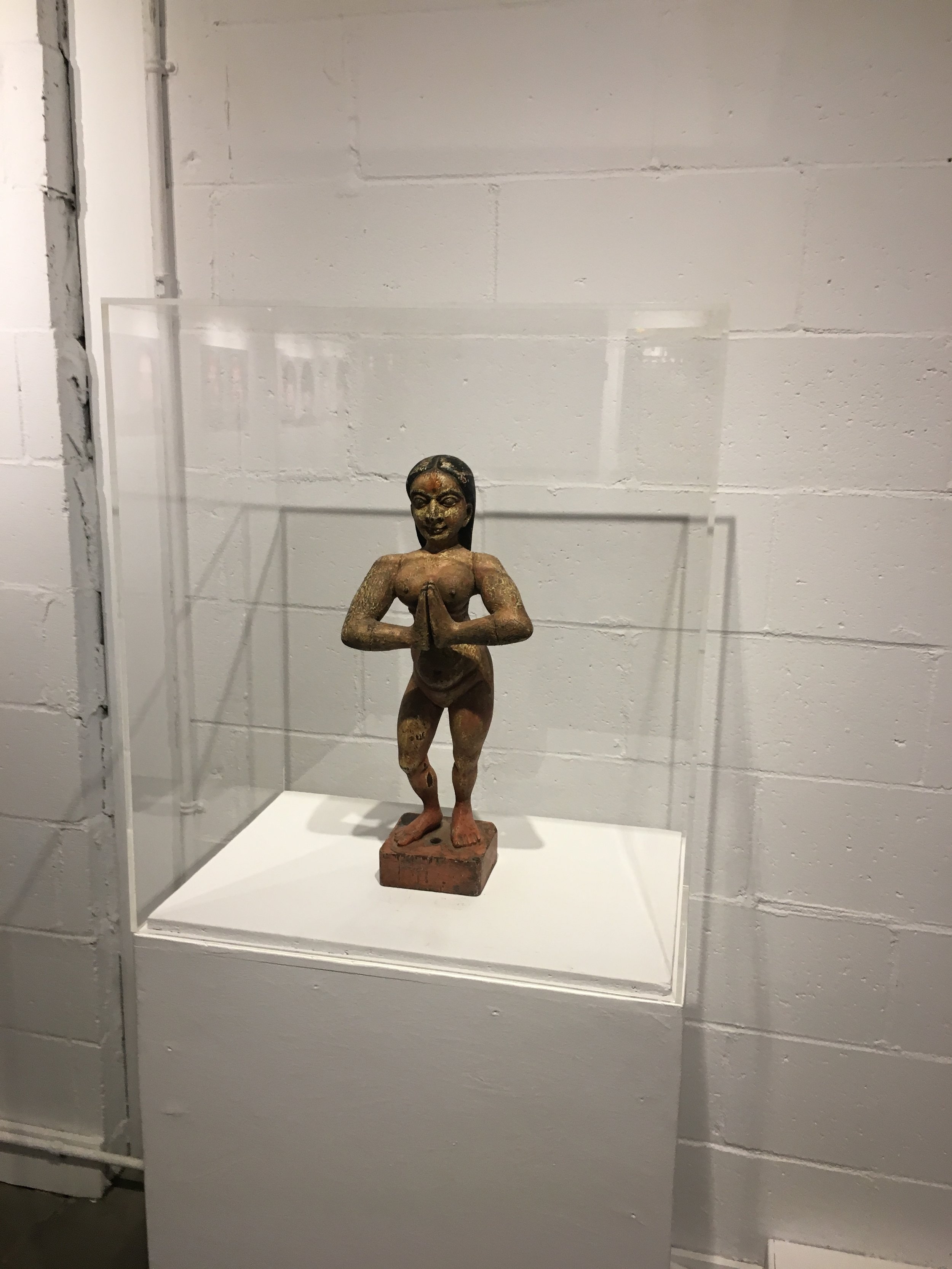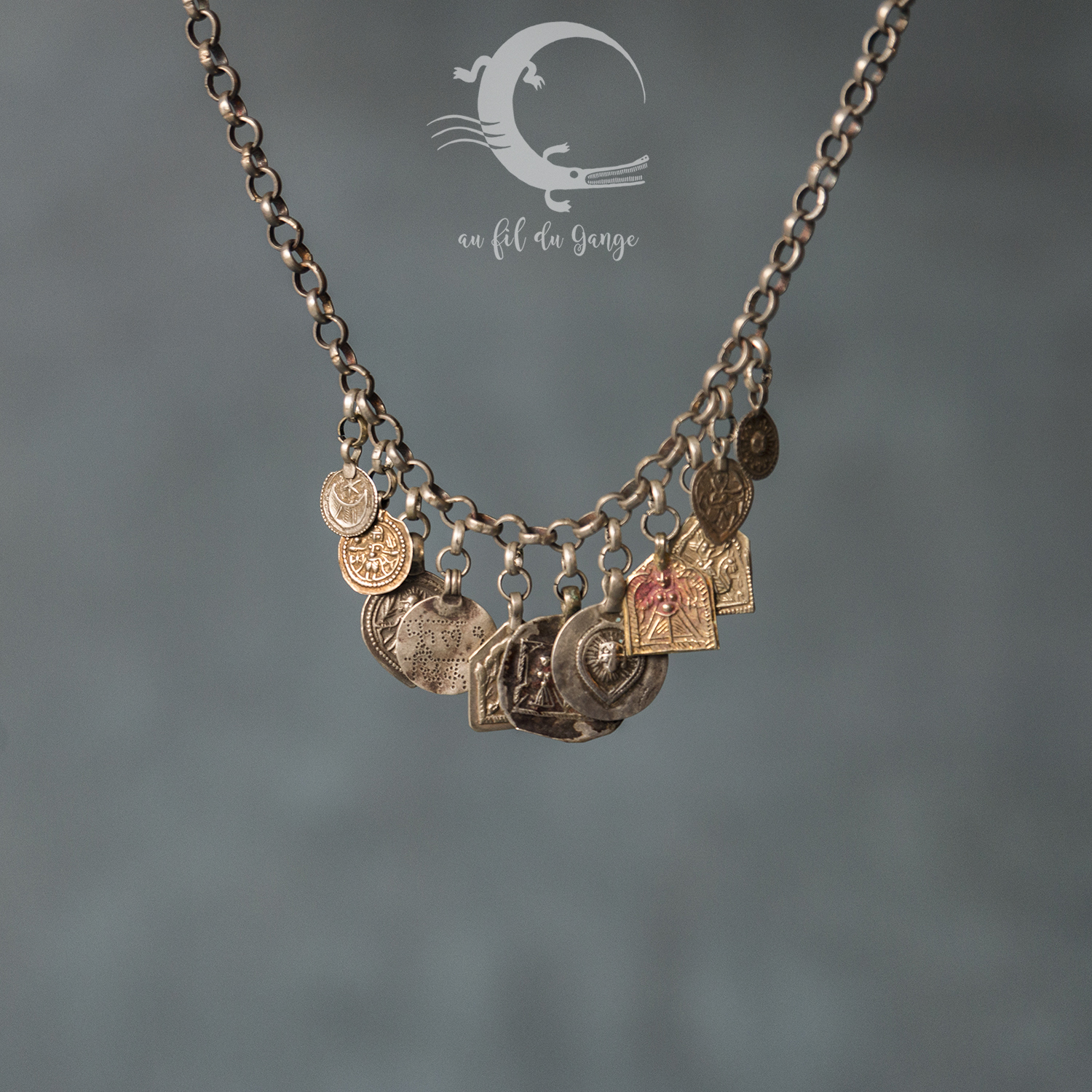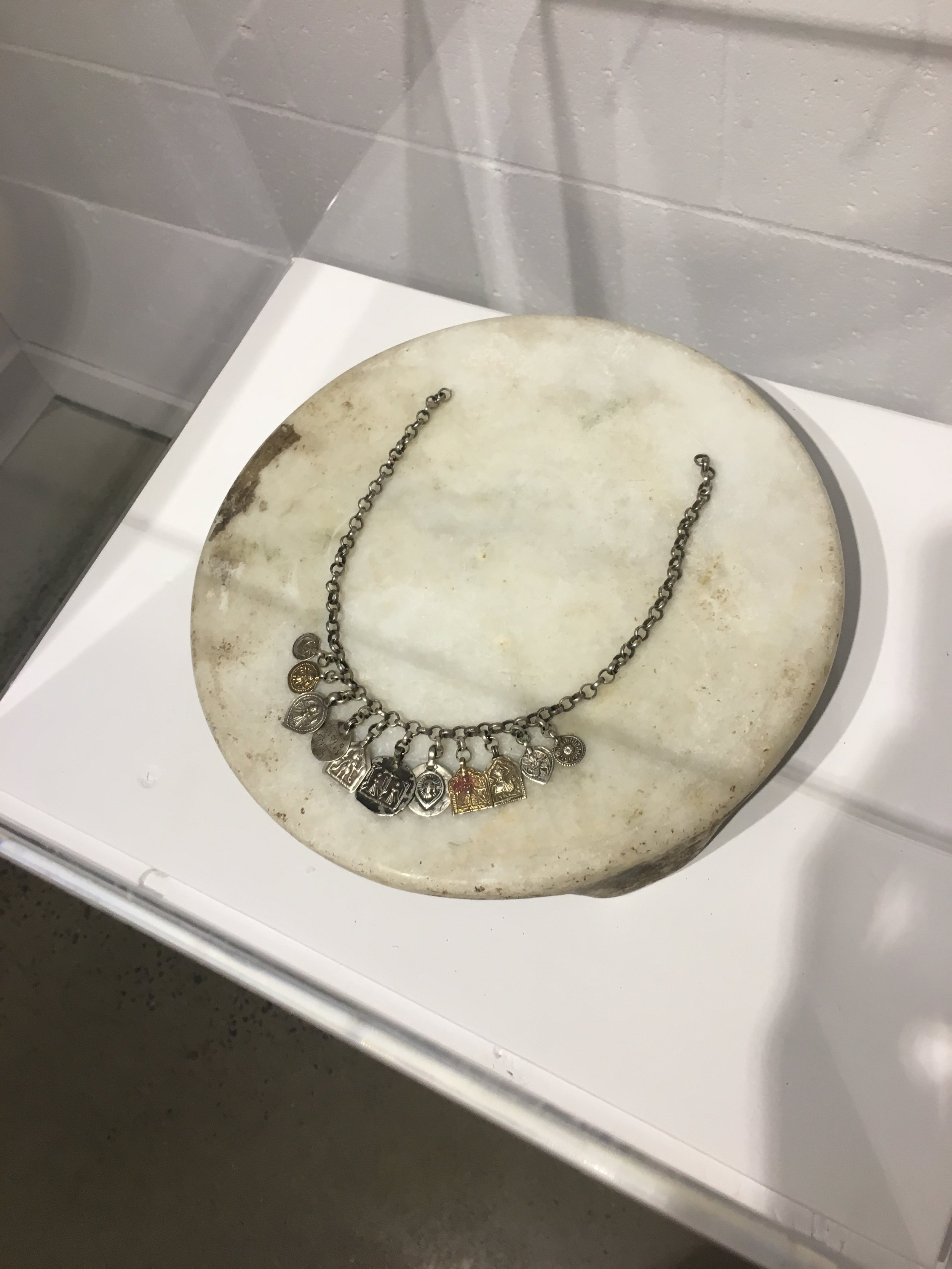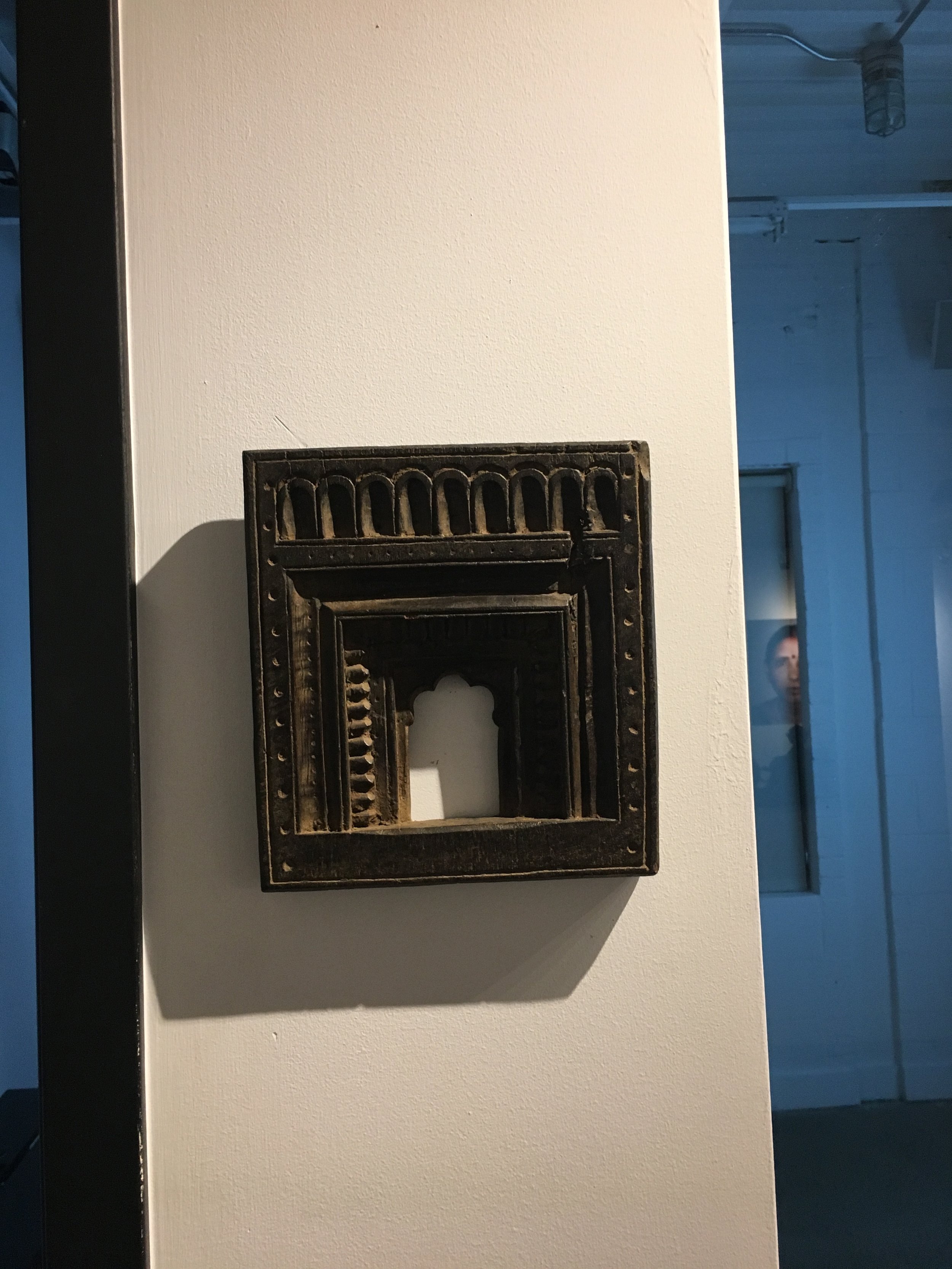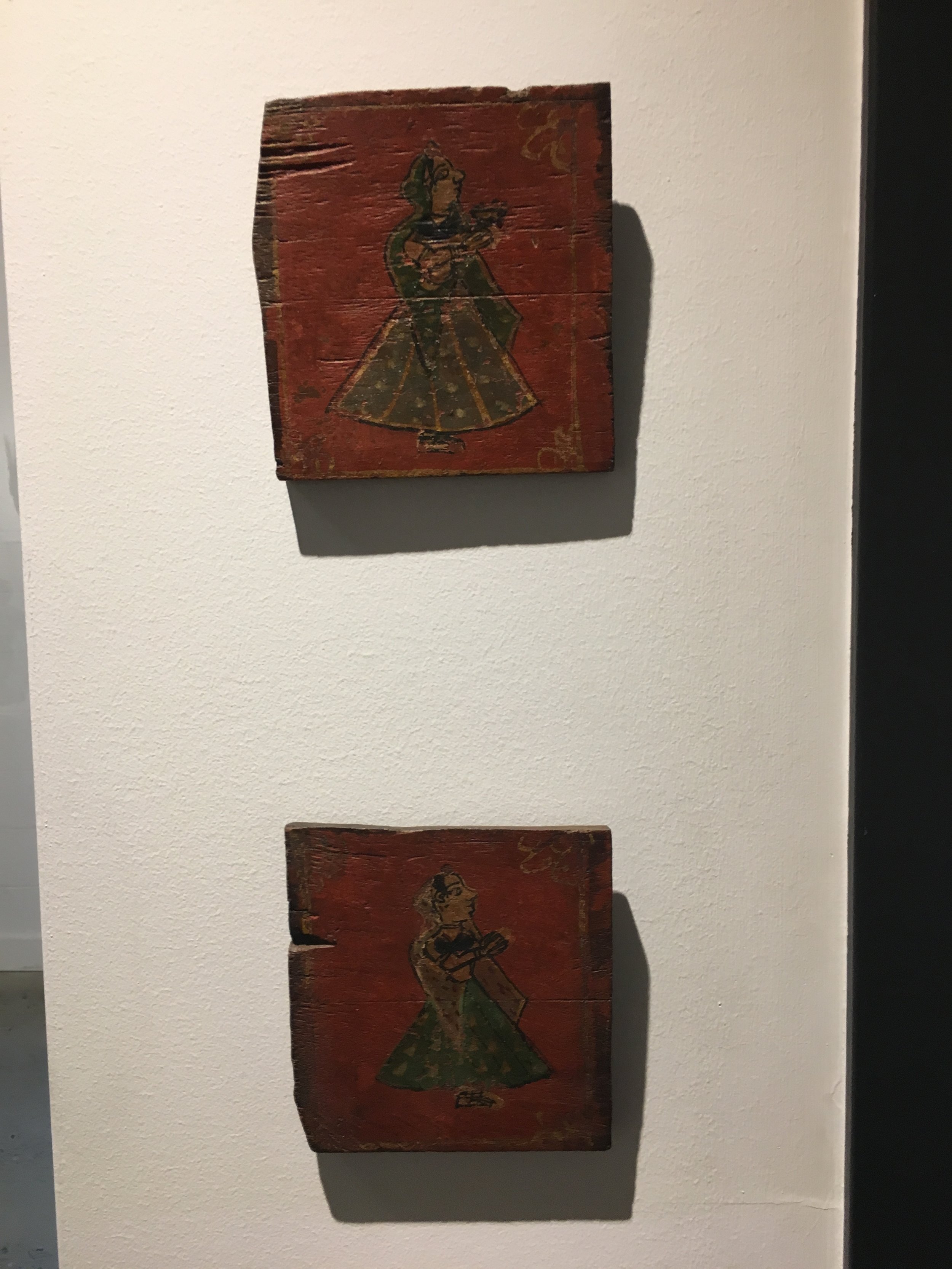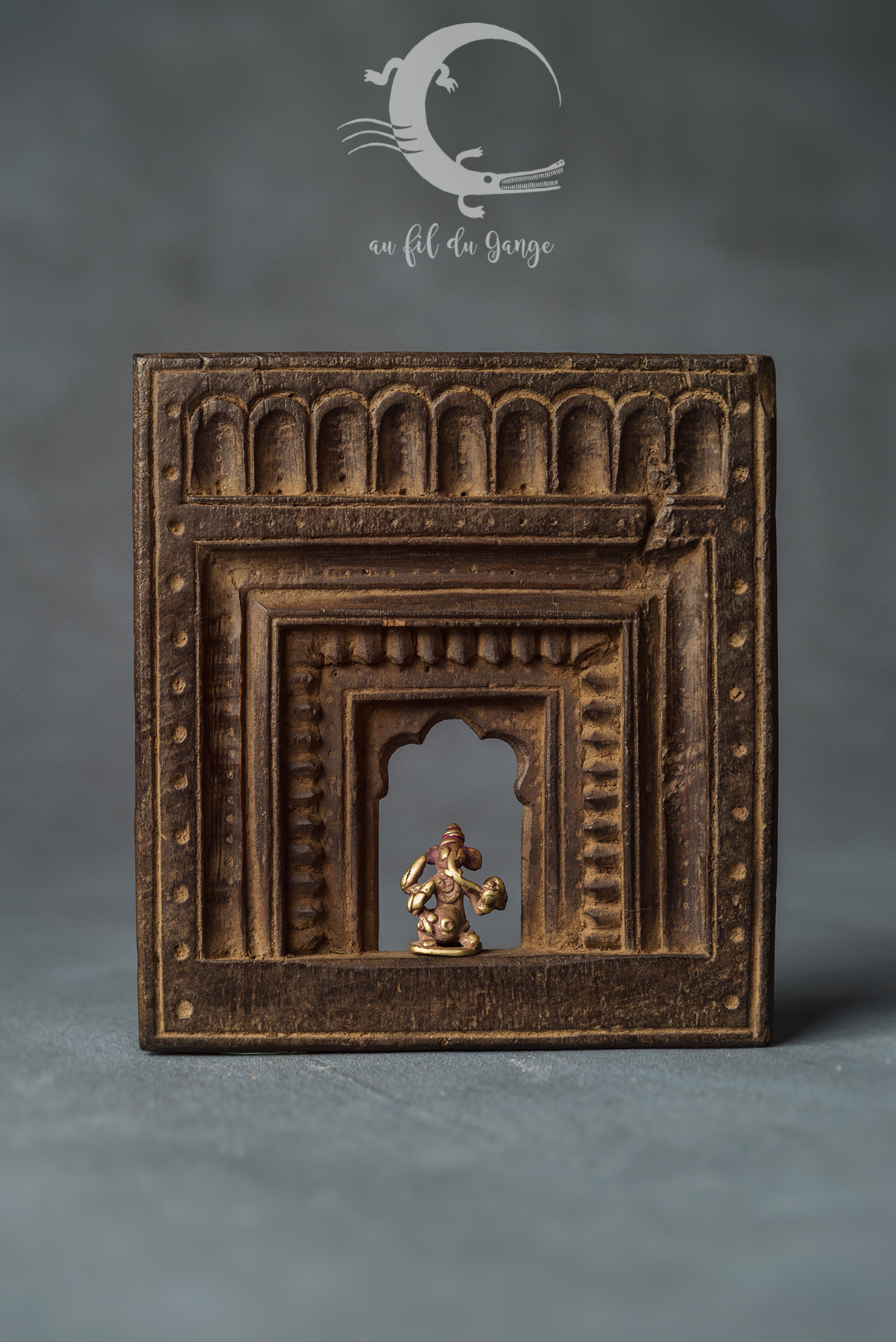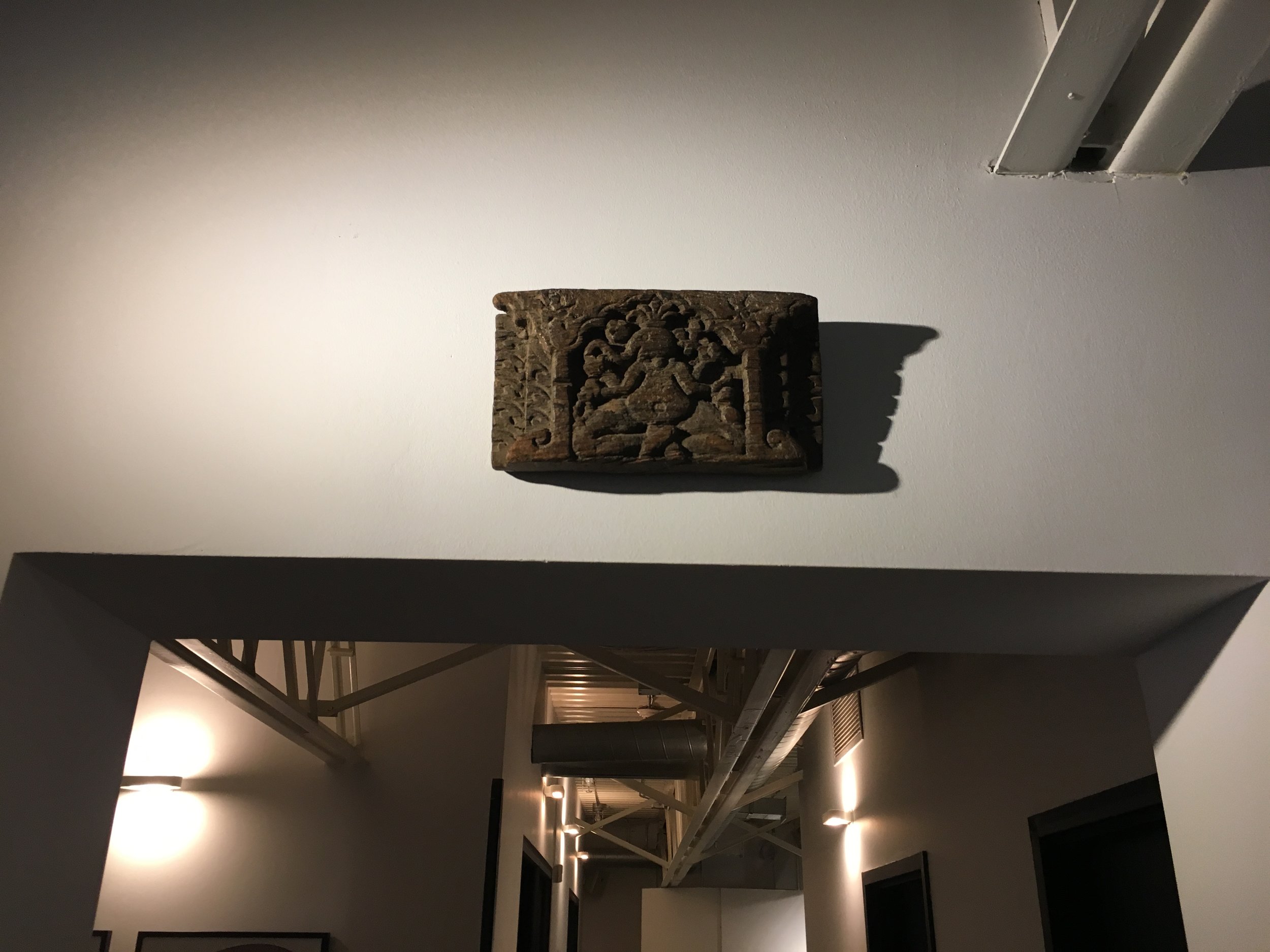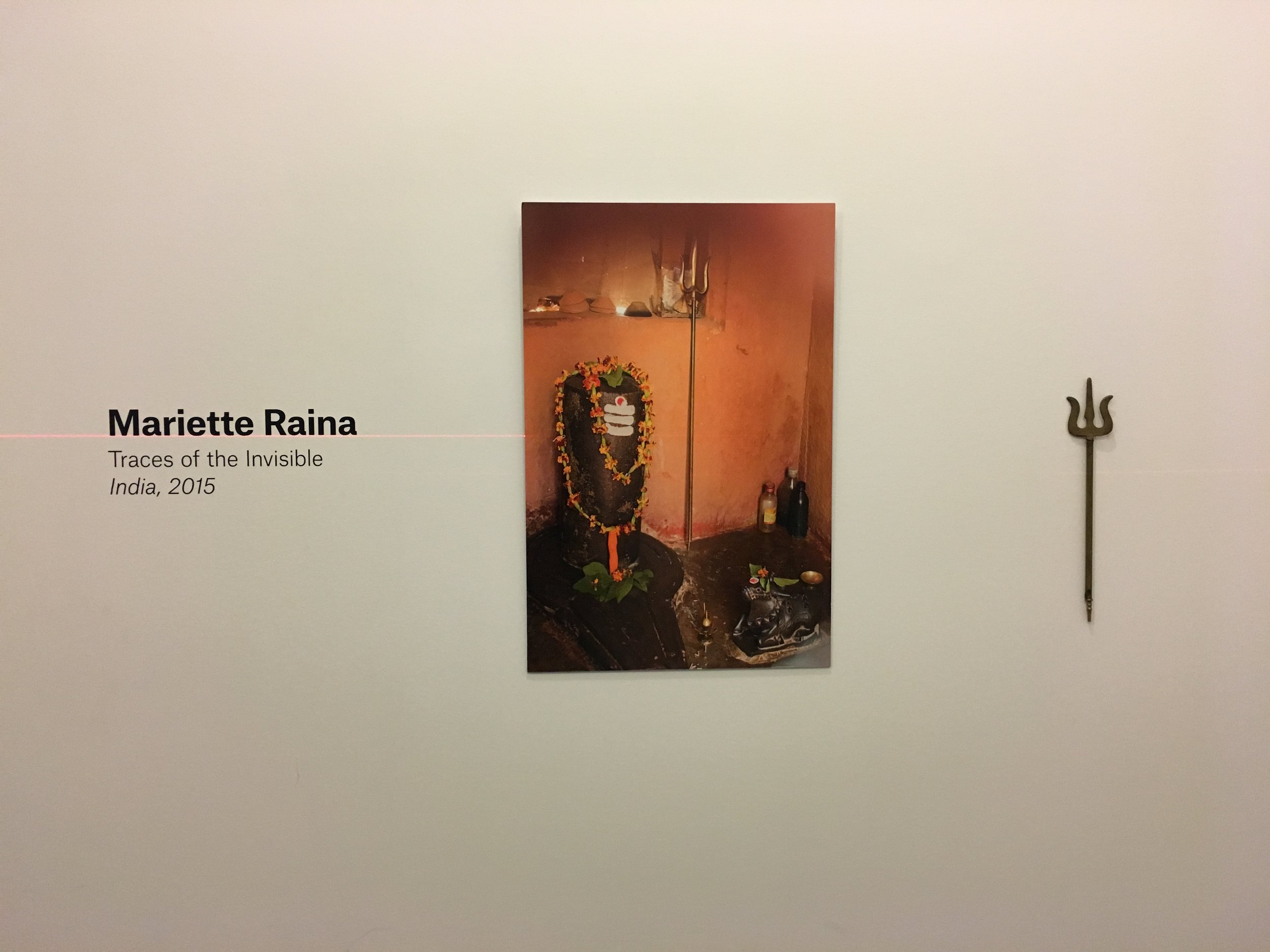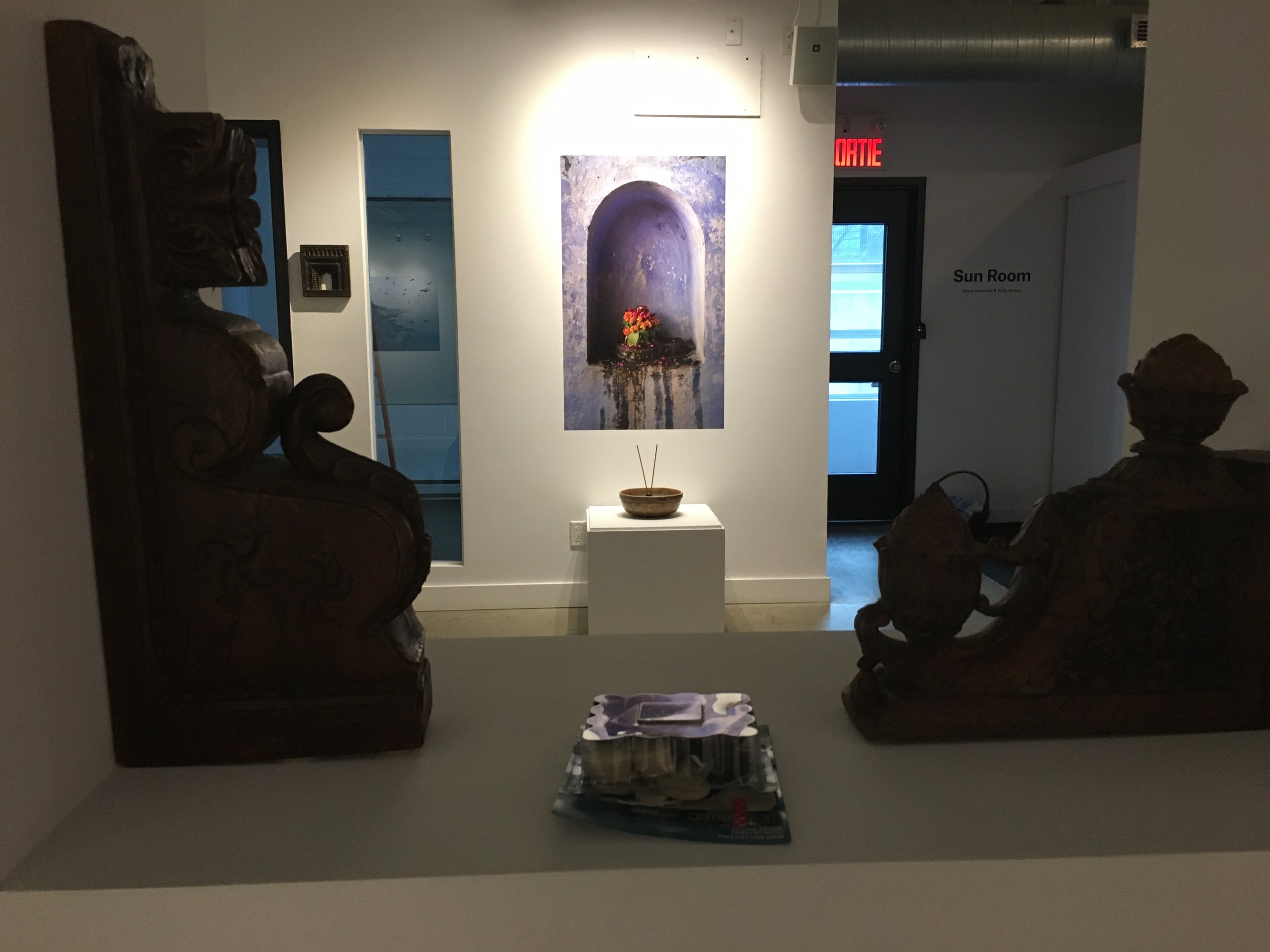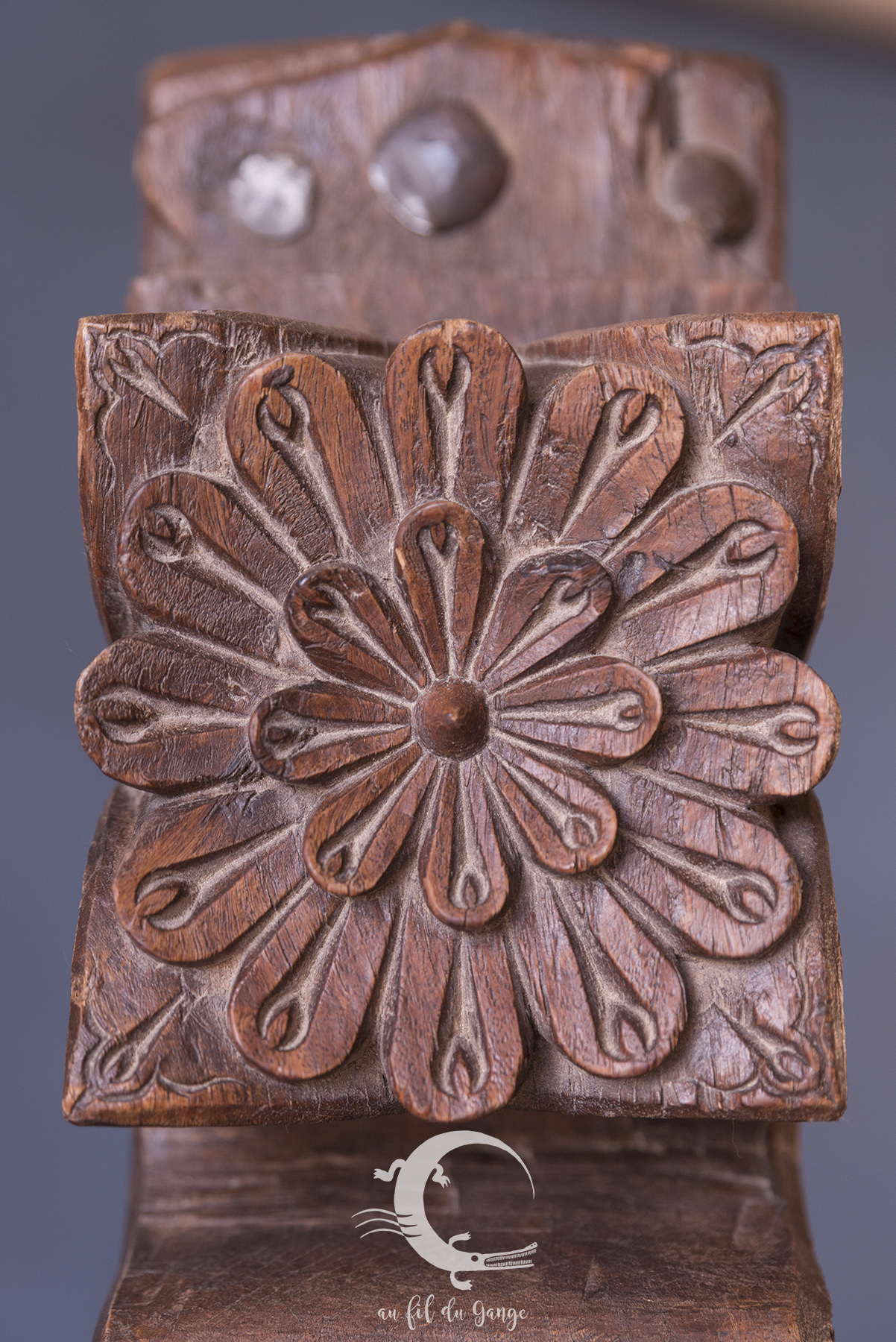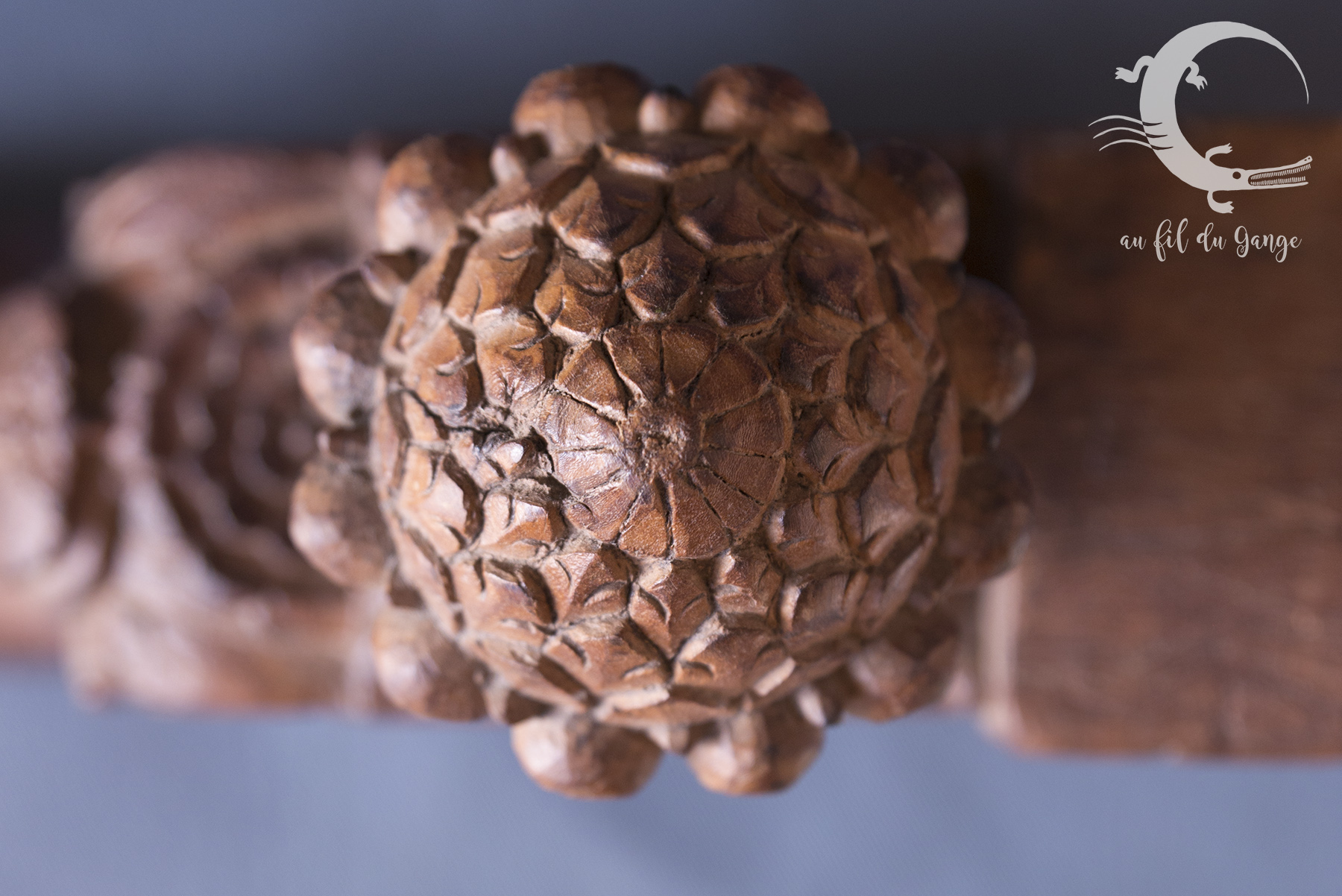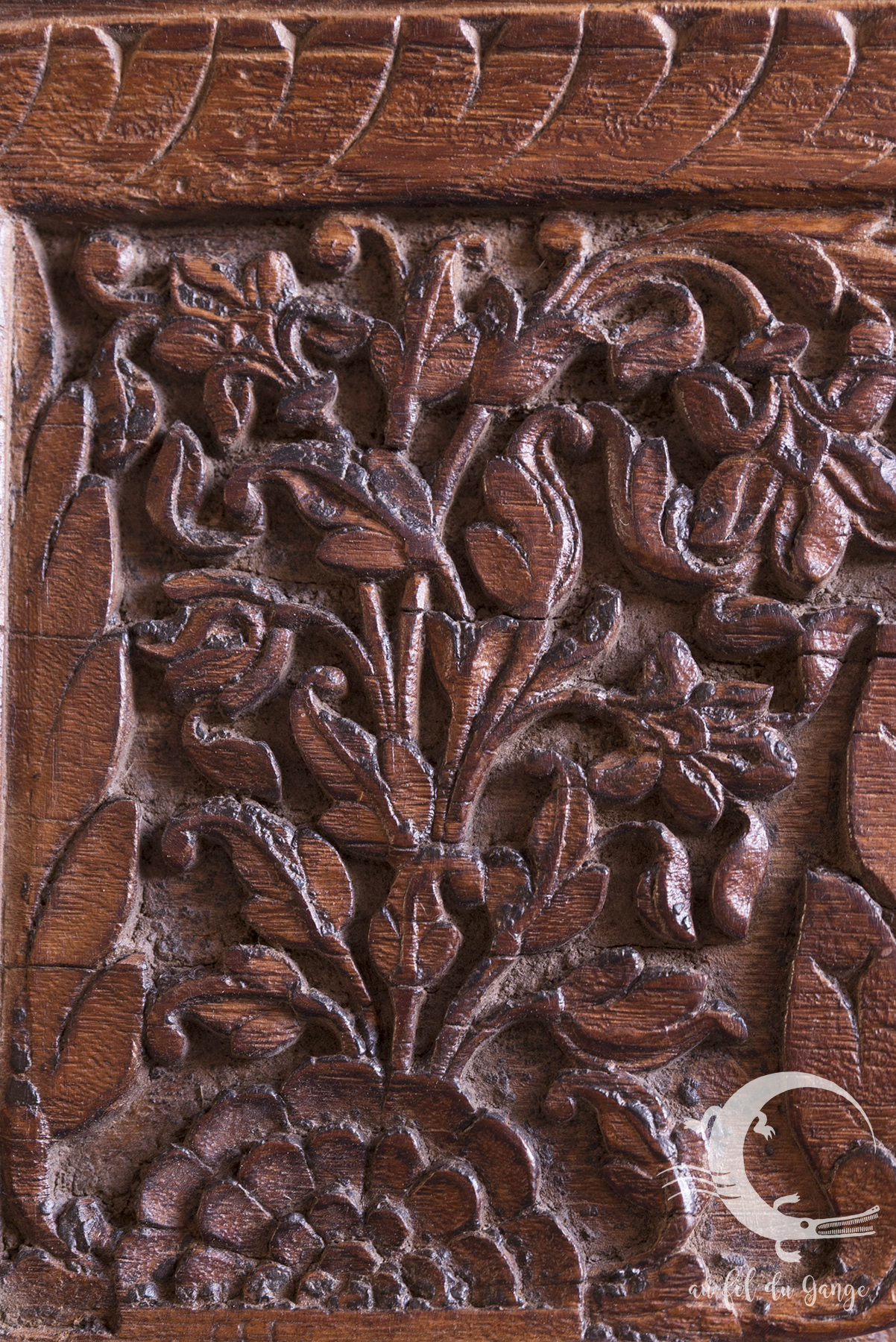Antiques
The antiques presented at the exhibition are not pieces made for tourists, nor are they reproductions. Each of them is unique and represents the concretization of an artistic expression at a given moment in the history of a culture.
The peculiarity of these pieces lies in the fact that they are the vehicle of a devotional commitment where the artist fades away in front of the divine who transcends him. It is for this reason that traditional art is never signed. These objects that come from villages presented during the exhibition are sometimes difficult to date, indeed, the style of the villages is often crude and does not follow the style of the classical pantheon.
Pendants of Rajasthan picturing worship of the goddess, mask of Kali used during processions, naked yogini in devotional posture, copper yoni, wood painting of devotees, carved Ganesh or lingam of stone naturally polished by the current of the Narmada river (India), are so many symbols that tell the story of a deity and connect man to the invisible world. Each piece is unique, carrying a cultural sense, but especially vibrant with truth and inhabited by an energy of presence.
Women devotees : polychrome on wood, Rajasthan
Ganesh : Guardian of the entrances, the elephant-headed God carries the world in his belly.
Temple frame : Rajasthan, wood carving. They worship temples or rich houses, in corners or niches.
Niche : small temple to worship the deity, it is often found inserted into a wall.
Lingam : Naturally polished by the Narmada river, the lingam symbolizes the erected phallus of Shiva, full Consciousness that carries the potential of the world’s manifestation. The lingam is a symbol as old as Hinduism. It represents the male archetypal form.
Trishul : Highly symbolic and mystical, one can see the Indian sadhus wander through India, trident in hand to signify their belonging to the Shivaite lineage. On the inner plane, the world rests on the three points of the trident, the rishis deposited in deep sadhana in its center.
Necklace : Each medallion represents part of the devotional ritual. The trident goddess is the female archetype that signifies the energy through which the world is manifested. The microcosm contains the macrocosm, the universe is contained in the world, the yogi is the alchemist.
Les antiquités présentées lors de l’exposition ne sont pas des pièces faites pour les touristes, et ne sont pas non plus des reproductions. Chacune d’elles est unique et représente la concrétisation d’une expression artistique à un moment donné de l’histoire d’une culture.
La particularité de ces pièces tient du fait qu’elles sont le véhicule d’un engagement dévotionnel où l’artiste s’efface face au divin qui le transcende. C’est pour cette raison que l’art traditionnel n’est jamais signée. Ces objets de villages présentées lors de l'exposition sont parfois difficiles à dater, en effet, le style des villages est souvent brut et ne suit pas le style du panthéon classique.
Pendentifs du Rajasthan qui vénèrent la déesse, masque de Kali utilisé lors des processions, yogini nue en posture de dévotion, yoni en cuivre, peinture sur bois de dévotes, Ganesh sculpté ou encore lingam de pierre poli naturellement par le courant de la rivière de la Narmada en Inde, sont autant de symboles qui racontent l’histoire d’une déité et connecte l’homme au monde invisible. Chaque pièce est unique, porteuse d’un sens culturel, mais surtout vibrante de vérité et habitée par une énergie de présence.
Femmes dévotes : polychromie sur bois, Rajasthan
Ganesh : Gardien des entrées, le Dieu à tête d’éléphant porte le monde dans son ventre.
Cadre de temple : Rajasthan, sculpture sur bois. Ils adorent les temples ou les maisons riches, dans les coins ou les niches.
Niche : petit temple pour adorer la divinité, on la trouve souvent insérée dans un mur
Lingam : Poli naturellement par la Narmada, les lingams symbolisent le phallus en érection de Shiva, pleine Conscience qui porte le potentiel de manifestation du monde. Le lingam est un symbole aussi vieux que l'hindouisme. Il représente la forme archétypale masculine.
Trishul : Hautement symbolique et mystique, on peut voir les sadhus indiens se promener à travers l’Inde, trident en main pour signifier leur appartenance à la lignée shivaïte. Sur un plan interne, le monde repose sur les trois pointes du trident, les rishis déposés en sadhana profonde en son centre.
Collier : chaque médaillon représente une partie du rituel dévotionnel. La déesse au trident est l’archétype féminin qui signifie l’énergie par laquelle le monde est monde. Le microcosme contient le macrocosme, l’univers est contenu dans le monde, le yogi en est l’alchimiste.
